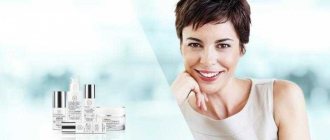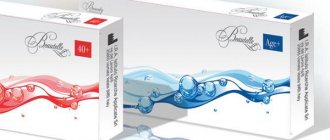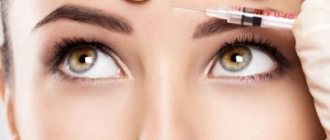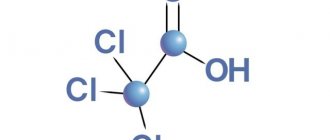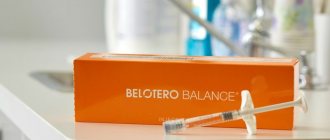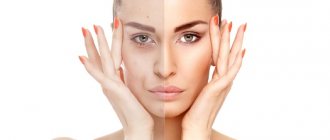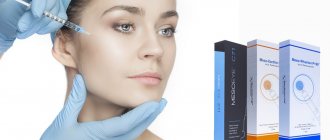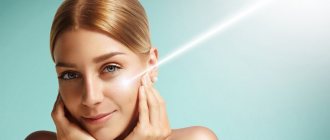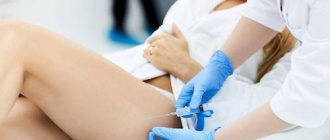Selective pulsed phototherapy using IPL technology is based on the selective impact on biological tissues with intense pulsed light in the wavelength range from 550 to 1200 nm, which allows selectively, without damaging the skin and surrounding tissues, to act on pigments, vascular lesions, inflammatory elements (acne, acne rash) and others, causing an increase in the temperature of chromophores (substances that can absorb light) and the elimination of pathology.
The phototherapy machine has several different programs to treat three main problems.
What is photofacial therapy?
Phototherapy of the face is carried out with a pulsed set devoid of ultraviolet radiation. Devices for light rejuvenation procedures allow you to adjust the wavelength and density of the light beam to solve various problems. The most modern devices contain a built-in cooling element, which increases the comfort and painlessness of the procedure for the patient.
Penetrating into the skin, light rays affect skin cells that are sensitive to the perception of sunlight; they are also called chromophores (ancient Greek, chromo - color, foro - bear). Skin chromophores include melanin, hemoglobin, protein molecules, etc. Each of them is capable of absorbing energy of only a certain spectrum. After interacting with light, the chromophore molecules enter an excited state, transfer energy to other molecules (for example, oxygen) and, absorbing energy, begin to heat up. Thus, phototherapy of the face leads to the following results:
- Melanin is destroyed, pigmentation disappears, visible skin lightening occurs;
- New collagen and elastin are actively produced to replace the destroyed ones, which gives the skin smoothness and elasticity;
- Cells begin to divide faster, hyaluronic acid is produced;
- Bacterial cells are destroyed, which allows you to get rid of acne;
- Small vessels coagulate, large ones shrink, and visible manifestations of the vascular network disappear.
What is the essence of acne phototherapy using the M22 device?
In phototherapy, we rely on the capabilities of the light radiation emitted by the M22 device. It generates heat and triggers physiological processes in the skin that contribute to its healing. The platform is also equipped with a special Acne filter, which has an antibacterial effect.
The acne phototherapy technique involves exposing problem areas of the face or body to warm, short-term pulsed flashes of light in a special range (311 nm). This pulsed light is free of dangerous ultraviolet radiation. Only the blue-violet component works. As a result of light exposure, local skin immunity is stimulated and activated, which leads to drying of rashes, their reduction and improvement of the condition of the skin.
It should be noted that acne is a skin disease that is internal in nature. This means that the rash is already the result of the disease, reflected on the skin. Therefore, phototherapy of acne is carried out in combination with taking medications prescribed by specialized specialists, normalizing the diet and its balance, giving up bad habits, maintaining an active healthy lifestyle, maintaining proper hygiene, and eliminating stress as much as possible. For a lasting qualitative improvement in the situation, it is necessary to undergo a full course of treatment, the number of sessions of which is determined individually based on the patient’s existing problems.
How is the procedure performed?
Before starting the procedure, the doctor is obliged to conduct a preparatory conversation with the patient, explaining what effect can be expected. He must carefully examine the patient and identify those areas that need adjustment. The cosmetologist warns in advance about the peculiarities of rehabilitation after the procedure and, in the absence of contraindications, conducts a session.
The first step is to apply a special gel to the patient’s entire face, which improves the passage of impulses and cools the skin. The patient and doctor then wear dark glasses to protect their eyes from the light flashes. The doctor selects the nozzle and, moving it over the patient’s face, produces flashes. The area that should not be touched is the area around the eyes, where there is a risk of retinal burns. Photofacial therapy is not a completely painless procedure. Burning and tingling will be felt, but they are tolerable. After the procedure, a soothing cream is applied to the face, and sometimes a mask is made. During the procedure, the face may turn red, but after an hour the redness will disappear.
Treatment of age spots
Treatment of excess melanin accumulation on the skin begins with identifying and eliminating the disease that caused melanosis. To do this, the dermatologist refers the patient for examination to a therapist, gastroenterologist, oncologist, and gynecologist. For any etiology of hyperpigmentation, a dermatologist-cosmetologist has the opportunity to remove this cosmetic defect using chemical peeling, laser resurfacing, photorejuvenation and phototherapy.
The last two methods are the most effective and gentle compared to aggressive whitening cosmetics, peeling and polishing. Photorejuvenation and phototherapy are performed for patients of both sexes from 25-30 years old and 18 years old, respectively. The first procedure is indicated for disturbances in the tone of the vascular wall (rosacea, rosacea) and hyperpigmentation. The second is for focal deposits of melanin, or hyperpigmentation. Below we will talk about only one of these procedures – phototherapy.
What do you need to know before the procedure?
Facial phototherapy has its own characteristics, like any cosmetic procedure. It is important for the patient to understand that facial phototherapy is not a circular skin tightening; it will not remove ptosis of the cheeks, nasolabial folds or bags under the eyes.
The phototherapy device must have new filters, as well as more than two attachments to solve different problems. Some clinics or salons do not purchase additional attachments, which is why the effect of the procedure does not lead to the desired result. It is important to go to a reputable institution, where the doctor does not skimp on the patient’s health and is committed to achieving long-term treatment results. One-time cosmetologists are not responsible for the lack of results and attribute it to the individual characteristics of the patient. It is worth paying attention to the technical equipment of the clinic where facial phototherapy is performed.
Karachausheva Aksana Georgievna
- Dermatologist, cosmetologist.
- Doctor of the highest qualification category for planning individual anti-age programs for facial and body rejuvenation.
- Specializes in a combination of modern hardware and injection techniques for skin rejuvenation and treatment. Proficient in the technique of facial contouring and harmonization of appearance while preserving natural beauty and individuality, all methods of nourishing and cleansing the skin. Treats rosacea, rosacea, acne and skin hyperpigmentation.
- He is fluent in the new concept of rejuvenation and non-surgical SMAS facial lifting using high-intensity focused ultrasound on the Ultraformer device.
Contraindications for facial phototherapy
Facial phototherapy is a procedure that has a number of contraindications. It is not performed in the presence of herpetic eruptions, in case of skin damage in the treatment area, during pregnancy and lactation. If there is no exacerbation of herpes, but there is a tendency to it, the patient is prescribed medications to prevent exacerbation two weeks before the procedure. Contraindications are also cancer and some types of dermatitis. If the patient has dark skin or has recently sunbathed, the procedure is not recommended. A contraindication is also the tendency to form keloid scars.
Indications
The phototherapy method allows you to cope with various problems and is used in several areas of medicine. The most common use of light therapy is in dermatology and cosmetology. Indications for the procedure are the following pathologies:
- vitiligo;
- psoriasis;
- eczema;
- dermatitis of various etiologies;
- decreased skin tone, loss of elasticity, appearance of wrinkles;
- acne and its consequences;
- age spots;
- rosacea of various stages.
Neurologists recommend phototherapy for certain types of depressive disorders, seasonal affective disorder, and insomnia. Neonatologists resort to this method of treatment to prevent rickets, with jaundice in newborns, and to strengthen the body.
Recovery after the procedure
The recovery period, in its usual sense, is practically absent. There may be some slight redness that will go away the same day. Sometimes there is a slight, barely noticeable swelling and peeling of the skin in the first two to three days. After the procedure, the doctor will recommend using special moisturizing creams and not going outside without SPF protection. It is better to avoid exposure to sunlight in any form for three weeks, so as not to provoke pigmentation and fragility of blood vessels. Temperature changes will not bring any benefit, so it is better to avoid the bath for a couple of weeks. You should also not use cosmetics containing alcohol. Facial phototherapy goes well with other hardware techniques, such as needle-free mesotherapy, ultrasound treatment or microcurrent therapy.
What factors contribute to the appearance of acne?
There are a number of environmental factors and internal changes in the body that can affect the development of the disease:
- hormonal changes and disorders (adolescence, pregnancy);
- endocrine disorders;
- internal diseases of the body (liver, kidneys, poisoning, parasites, bad habits);
- intestinal diseases, dysbiosis;
- skin infections;
- improper, unbalanced diet;
- heredity;
- stress;
- bad ecology;
- insufficient hygiene.
Effect of facial phototherapy
Facial phototherapy is a safe and virtually painless procedure. To achieve permanent results, a course of procedures is required. One session takes from 10 to 40 minutes. The pauses between them are usually two to three weeks. Depending on the indications, the course is recommended from 4 to 8 procedures. Maintenance procedures may be prescribed once a year. Phototherapy does not have an immediate, but an increasing effect, so the greatest result will be noticeable after one and a half to two months.
The procedure makes the skin smooth and renewed. It gets rid of the vascular network and permanently removes the manifestations of pigmentation in the affected area. The skin becomes bright and smooth. Phototherapy cannot treat facial ptosis and will not lift the chin or eyelids. To rejuvenate the face, a set of procedures is required, including peelings, biorevitalization, contouring and other achievements of aesthetic medicine. But, due to the renewal of the upper layer of skin, a slight lifting effect is achieved. Facial phototherapy has the main goal of improving the quality of the skin, making the face look more fresh, rested, toned and youthful.
What are the advantages of acne phototherapy on M22?
Hardware treatment of acne on M22 using light photons has a number of undeniable advantages, due to which the popularity of this technique is constantly growing:
- safety of the procedure (there is no harmful ultraviolet component of the spectrum);
- painless and comfortable sessions;
- non-traumatic skin, there is no risk of complications and infection;
- impact only on problem areas of the skin (healthy areas are not damaged);
- lack of rehabilitation period;
- speed of the procedure (from 15 to 30 minutes);
- quick visible results after 10 days;
- cleansing the skin of acne and comedones by 90% at the end of the course of treatment;
- general improvement in skin condition (rejuvenation, disappearance of age spots and freckles, narrowing of pores, smoothing of facial microrelief, smooth, healthy, matte skin color);
- Possibility of execution at any time of the year.
Self-administered phototherapy at home
- Do not apply lotion or moisturizer 24 hours before each session.
- During each session you will need the following: Safety glasses. The phototherapy machine supplier will provide them to you.
- Home phototherapy device.
- If you are treating your eyelids, you do not need to wear eye protection, but be sure to keep your eyes closed throughout the treatment.
to come back to the beginning
Photorejuvenation specialists
Ramazanova Liliya Ramilevna
Fasakhova Elvira Idrisovna
Chokheli Irina Stefanovna
Syrtlanova Maria Vadimovna
Advantages of the phototherapy method
- Painless and non-toxic procedure.
- The effectiveness of the method is determined immediately, which allows you to avoid a course of useless procedures.
- Only the problematic protein (melanin) is eliminated, other skin structures are not damaged.
- A gentle effect on the skin without harsh rehabilitation and interruption from your usual active lifestyle.
- There is no long-term complications in the form of crusts, peeling, increased sensitivity of the skin (after laser resurfacing it can last for years), constant long-term erythema (redness), dryness (as with chemical peels).
- A positive “side effect” is the fight against skin aging (age-related wrinkles, skin atrophy) by stimulating the synthesis of new collagen, elastin, hyaluronic acid and other skin components, a lifting effect, and a pore-narrowing effect.
The key advantage of phototherapy at GUTA CLINIC is that the procedure is carried out by leading doctors - dermatologists and cosmetologists. First, the patient will undergo dermatoscopy (video diagnosis of skin lesions using a special dermatoscope device), which will allow differentiation of skin neoplasms similar in appearance to age spots (lentigo maligna, basal cell carcinoma, actinic keratosis, seborrheic keratosis). Based on the results of dermatoscopy, the doctor will decide on the need for phototherapy.
When should you contact your healthcare provider?
Call your healthcare provider if you experience the following symptoms:
- temperature rises to 100.4°F (38°C) or higher;
- chills;
- blisters, cracks, discharge or rash appear on the skin;
- after treatment, one or more new lesions (growths on the skin or areas that look different from the surrounding skin) appeared on the affected area;
- have flu-like symptoms, such as headache or body pain;
- weakness (you feel more tired or weak than usual);
- nausea (feeling of vomiting);
- vomiting;
- diarrhea (loose or watery stools);
- cough;
- a sore throat;
- runny or stuffy nose;
to come back to the beginning
How does photorejuvenation work?
The essence of the technique is to activate restoration processes in tissues, which is achieved using intense pulsed light (IPL - Intensive Pulsed Light). During the procedure, a special device treats each problem area.
Photorejuvenation is very effective in removing all kinds of age spots. They are formed when melanocyte cells in certain areas of the skin begin to produce too much of the natural pigment, melanin. It is responsible for coloring human skin, hair, and irises. The higher the concentration of melanin, the darker the color becomes. At a young age, the pigment is formed under the influence of bright sunlight. Thus, our body is protected from ultraviolet radiation.
But at a more mature age, hyperpigmentation may already appear, which is a consequence of the thinning of the basement membrane, which separates the epidermis (upper layer of skin) from the dermis (underlying layer of skin). As a result, the pigment embedded in the deep layers of the skin begins to appear on the surface, unevenly forming age spots.
During the removal of pigment spots, a cooling gel is applied to the treated surface, and a light pulse is passed through it. This is necessary for the correct exposure of the light beam to the spot. The target for the beam is precisely the pigment melanin. As a result, the pigment spot first darkens and then disappears, and the skin color evens out.
Photorejuvenation is no less successful in treating vascular manifestations. Skin cells contain the protein hemoglobin. It is responsible for delivering oxygen to cells. When a capillary vessel expands, hemoglobin stagnates in it. Such congestion appears on the skin in the form of spider veins. If the star is located deep enough, then it shines through the skin with a blue tint, and if close to the surface of the skin, then red.
During photorejuvenation, light beams are directed at vascular formations, as a result of which stagnant hemoglobin is destroyed (collapses) and the vascular pattern disappears. It is also possible to remove unnecessary tattoos, especially if red ink was previously used when applying the tattoo.
During the procedure, a gentle warming of the skin occurs at the same time, as light energy is transformed into heat. Such heating has a very beneficial effect, as it activates the synthesis of collagen fibers. As a result, the skin becomes more elastic and smooth, wrinkles are smoothed out, and acquires a healthy shade.
Result
- smoothing out fine wrinkles
- pigmentation removal
- narrowing of pores, normalization of the sebaceous glands,
- healthy complexion
- removal of small vessels (redness)
- improvement of skin tone;
- more elastic and tightened skin;
- reduction of inflammation
We at LR CLINIC value our reputation; during IPL therapy, our cosmetologists use the Israeli-made FORMA-TK device or the multifunctional Estetica 2.0 platform, which allows us to effectively and safely solve a whole range of aesthetic problems. A unique opportunity to solve various dermatological problems during one procedure using various attachments (facial photorejuvenation, treatment of acne and post-acne, elimination of spider veins, spider veins and pigmentation).
Possibilities of photorejuvenation: what to expect from the procedure
Based on reviews from cosmetologists, the likely results of photorejuvenation become noticeable after one or two sessions. Carrying out procedures makes it possible to:
- lighten skin color and make it more even;
- get rid of pigmentation, existing static and facial wrinkles, and also prevent the appearance of new ones;
- tighten the oval of the face, make its contours clearer and firmer;
- increase skin elasticity and firmness;
- reduce the number of spider veins;
- cleanse pores of impurities;
- get rid of acne;
- tighten pores.
Who is suitable for M22 procedures?
M22 consists of 3 modules, each of which solves specific problems.
Universal IPL module:
- effectively treats acne;
- removes vascular and pigment formations;
- suitable for working with rosacea (rosacea);
- evens out skin color;
- performs photorejuvenation.
Fractional laser ResurFX:
- eliminates wrinkles;
- tightens pores;
- works with stretch marks;
- removes scars and acne marks.
Nd:YAG laser:
- works with vessels of any color on the body;
- eliminates the network of capillaries;
- removes wine stains.
